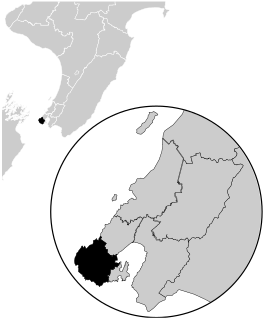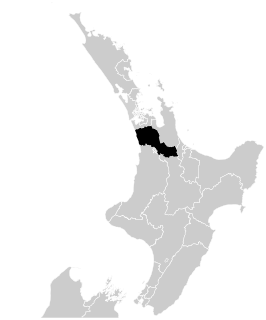Related Research Articles
Karori was a New Zealand electorate, situated in the west of Wellington. It existed from 1946 to 1978, and was represented by three different Members of Parliament during that period, all of them are represented by National Party due to being a wealthy suburb.
Masterton was a New Zealand electorate from 1887 to 1946, focused on the town of Masterton and the surrounding area.

Wellington Central is an electorate, represented by a Member of Parliament in the New Zealand House of Representatives. Its MP since November 2008 has been Labour Party's Grant Robertson. In the 2020 election he was opposed by James Shaw (Greens) and Nicola Willis (National), both also entered parliament via their respective party lists.
Brooklyn was a New Zealand parliamentary electorate in Wellington city from 1946 to 1954. It was represented by two prominent members of the Labour Party: Peter Fraser, who was Prime Minister (1940–1949), and Arnold Nordmeyer, who was later Minister of Finance (1957–1960).

Waikato is an electorate in the New Zealand Parliament. A Waikato electorate was first created in 1871 and an electorate by this name has existed from 1871 to 1963, 1969 to 1996, and 2008 to the present, though exact borders have often changed.
Otahuhu is a former New Zealand parliamentary electorate in the southern suburbs of the city of Auckland, from 1938 to 1963, and then from 1972 to 1984.

Eden, a former New Zealand parliamentary electorate, lay in the general area of the suburb of Mount Eden in the city of Auckland.
Wellington South is a former New Zealand parliamentary electorate. It existed for two periods between 1881 and 1946. It was represented by seven Members of Parliament.
Fendalton is a former New Zealand parliamentary electorate. It existed during two periods between 1946 and 1996. The electorate was in the western suburbs of Christchurch, New Zealand. Fendalton is an expensive suburb, and was always represented by the National Party.
Riccarton is a former New Zealand parliamentary electorate. It existed from 1893 to 1978, and was represented by eight Members of Parliament.
Pahiatua is a former New Zealand parliamentary electorate in the Wairarapa region. It existed from 1896 to 1996, and was represented by nine Members of Parliament, including Prime Minister Keith Holyoake for 34 years.
Mid-Canterbury was a New Zealand parliamentary electorate in rural Canterbury. It existed from 1928 to 1946 and was represented by six Members of Parliament, including Mary Grigg, the first woman National Party MP.
Dunedin West was a New Zealand parliamentary electorate, in the city of Dunedin. It existed for three periods between 1881 and 1996 and was represented by seven Members of Parliament.
Marsden was a former parliamentary electorate, in the Whangarei District and in the Northland Region of New Zealand, which existed from 1858 to 1972. Upon its abolition, Marsden was replaced with the Whangarei electorate.
Wellington North was, from 1905 to 1946, a parliamentary electorate within the area encompassing New Zealand's capital, Wellington. The electorate was represented by four Members of Parliament.
Wellington East was a parliamentary electorate in the eastern suburbs of Wellington, New Zealand from 1887 to 1890 and from 1905 to 1946. It was succeeded by the Miramar electorate. The electorate was represented by seven Members of Parliament.
Wellington Suburbs was a parliamentary electorate in Wellington, New Zealand. It existed from 1893 to 1902, then from 1908 to 1911, and from 1919 to 1946. The electorate was represented by six Members of Parliament.
Auckland Suburbs was a parliamentary electorate in Auckland, New Zealand from 1928 to 1946.
Roslyn was a parliamentary electorate in the city of Dunedin in the Otago region of New Zealand from 1866 to 1890.
Oamaru was a parliamentary electorate in the Otago region of New Zealand, during three periods between 1866 and 1978.
References
- McRobie, Alan (1989). Electoral Atlas of New Zealand. Wellington: GP Books. ISBN 0-477-01384-8.
- Scholefield, Guy (1950) [First published in 1913]. New Zealand Parliamentary Record, 1840–1949 (3rd ed.). Wellington: Govt. Printer.
- Wilson, James Oakley (1985) [First published in 1913]. New Zealand Parliamentary Record, 1840–1984 (4th ed.). Wellington: V.R. Ward, Govt. Printer. OCLC 154283103.